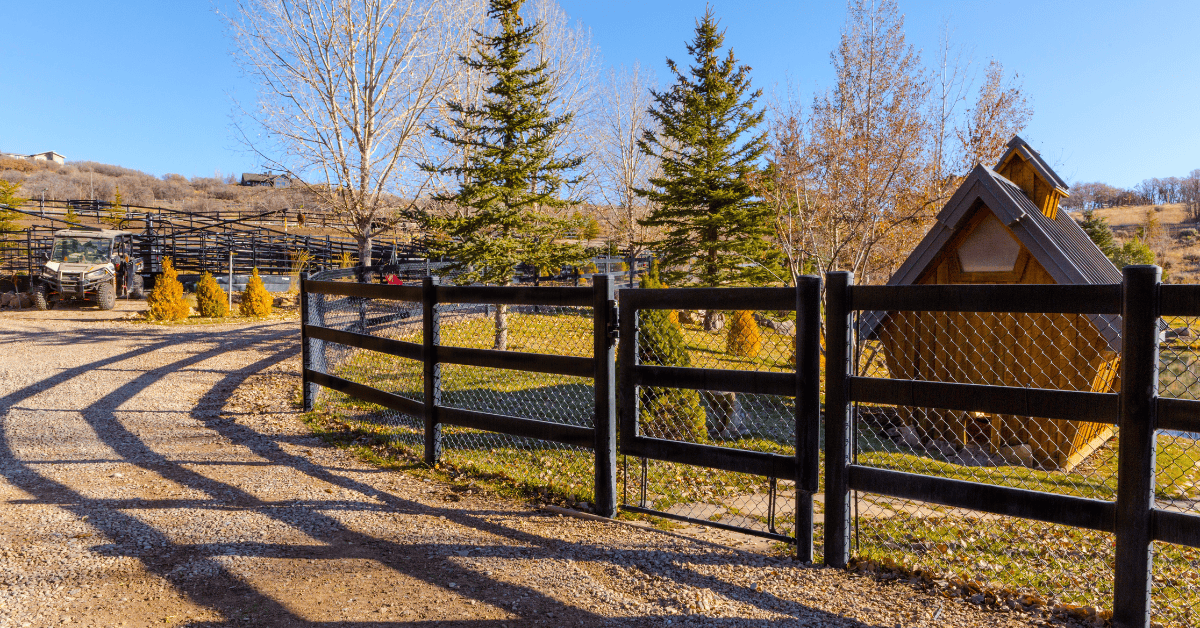If you’ve been around horses long enough, you know the true cost of fence failure isn’t just about the dollars and cents of repairs. It’s about those midnight calls when a horse has gotten loose. The pit in your stomach when you spot a compromised section after a brutal storm. The constant worry about rust eating away at your investment, piece by piece.
We’ve spent decades talking with ranchers who’ve learned these lessons the hard way. Truth is, when it comes to horse fencing, the steel itself is only half the story. That protective finish—it’s not just about looks. It’s about keeping your fence standing strong through years of kicks, scratches, harsh sun, and whatever else your operation throws at it.
Here’s something most folks don’t talk about: architectural powder coating isn’t just another fancy term for paint. It’s an entirely different beast. While standard finishes might look good on day one, we’re more concerned about how your fence holds up on day 1,000. Or year 10.
Because on a working ranch, that’s what matters.
Below, we’ll cut through the marketing talk and get down to what you really need to know about protecting your fence investment. We’ll walk you through exactly what sets architectural powder coating apart, and why it’s become the go-to choice for serious ranchers who are tired of throwing good money after bad on frequent repairs and repainting.
What Is Architectural Powder Coating on Fences?
An architectural powder coating on your fence is an advanced three-layer system that actually becomes part of the steel itself:
- It starts with a zinc-rich primer that chemically bonds to the steel, creating a foundation that fights corrosion at the molecular level.
- Then comes a second layer that acts like a shock absorber, taking the brunt of daily abuse.
- The final layer is engineered specifically for the brutal UV exposure and weather extremes that would break down standard coatings in a matter of months.
Here’s what separates true architectural-grade coating from the industrial powder coating you might see on lawn furniture or gate hardware: it’s all in the preparation and precision. Every step of the process is controlled down to the micron level—from the surface preparation that creates the perfect “tooth” for adhesion, to the carefully calibrated temperature that guarantees the coating flows into every nook and cranny before curing harder than conventional paint ever could.
Architectural powder coating isn’t just about protecting against rust. It’s about building a barrier that stands up to daily abuse from hooves, equipment, and Mother Nature herself.
When you’re looking at powder coated fencing, ask about the thickness of each layer. Quality architectural coating will have specifications you can actually measure—typically a minimum of 3-5 mils per layer. If a manufacturer can’t tell you their exact specs, that’s a red flag bigger than a bull in your horse pasture.
Real Ranch Conditions, Real Results
This isn’t just about theory or laboratory tests, though we’ve got plenty of those too. It’s about real performance in the places where fencing gets tested to its limits. We’re talking sustained exposure to everything Mother Nature can throw at it:
Take those brutal temperature swings in Montana, where the steel expands and contracts like a breathing thing. Standard coatings crack and peel under that stress. But architectural powder coating flexes with the steel, maintaining its bond even when the mercury drops from 95 to 15 degrees overnight.
Then there’s impact resistance—because we all know horses and equipment are going to test your fence’s strength. When a 1,200-pound mare kicks a powder coated panel, that coating doesn’t chip or flake like paint would. The elasticity built into the coating absorbs the impact while maintaining its protective seal. We’ve seen panels take hits that would have stripped traditional finishes down to bare metal, yet the powder coating stays intact.
The proof is in the salt spray testing. This is the gold standard for corrosion resistance. While most industrial coatings start showing rust creep after 1,000 hours of exposure, architectural powder coating stands strong for over 4,000 hours. That’s the difference between a fence that looks weathered after a few seasons and one that keeps its integrity for over a decade.
Still, perhaps the most telling results come from the acidic soils of the Pacific Northwest. Traditional finishes break down quickly in these conditions, especially where the posts meet the ground. Yet after ten years in these same soils, powder coated posts show minimal signs of wear. The zinc-rich primer keeps working even in these challenging conditions, preventing the subsurface corrosion that kills most fences from the ground up.
Here’s what really matters though: when ranchers tell us they haven’t had to replace a single section due to coating failure in over a decade. Or when they mention how their powder coated fencing stood up to a prairie fire that melted their neighbor’s vinyl. These are real-world proof that architectural powder coating delivers on its promises.
Because at the end of the day, your fence needs to do more than just look good when it’s first installed. It needs to maintain its structural integrity through years of hard use. That’s not just about protecting your investment—it’s about keeping your livestock safe and your operation running smoothly, season after season.
Long-Term Value for Ranch Owners
When we break down the numbers for architectural powder coated fencing versus traditional finishes, the math starts making a whole lot of sense:
- Maintenance Hours Cut in Half: Most ranches spend about 60-80 hours annually maintaining painted fencing. With powder coating, you’re looking at maybe 25-30 hours tops. That’s time you get back for more pressing ranch work, and we all know time is money when you’re running an operation.
- Zero Repainting Costs: Traditional painted fencing needs a fresh coat every 3-4 years, running about $5-8 per linear foot. Over a decade, that’s repainting your fence three times. Powder coated fencing? You’re not touching it with a paintbrush for 15-20 years, if ever.
- Insurance Benefits: Here’s something your insurance company won’t tell you up front—many are starting to offer reduced premiums for properties using architectural powder coated fencing. They’ve seen the liability claims drop when fences maintain their structural integrity longer.
- Property Value Impact: Real estate appraisers are catching on too. Well-maintained powder coated fencing can add 1.5-2% to your property’s value compared to standard fencing. On a million-dollar ranch, that’s $15,000-20,000 in added value.
Look, we get it. The upfront cost of architectural powder coating might make you pause. You’re looking at about 15-20% more than traditional painted steel. But run the numbers over 10 years, factoring in maintenance, repainting, repairs, and replacement—powder coating comes in at significantly lower total cost of ownership.
While most painted fences come with a 5-year warranty (and good luck getting them to honor it), quality architectural powder coating backs its performance with 15-20 year warranties. Not those “prorated” warranties either, but genuine coverage that reflects real confidence in the product.
The real value is in what doesn’t happen. You’re not canceling plans to fix fence damage after a storm. You’re not constantly checking for rust spots that could compromise your fence’s strength. And you’re definitely not explaining to your insurance company how a horse got loose because of corroded fencing.
Because at the end of the day, the best fence is the one you don’t have to think about. It’s just there, doing its job, year after year. That’s what architectural powder coating delivers: peace of mind that’s worth every penny.
Invest in a Fence You Can Trust with Buckley Fence
When you’ve spent your life working with horses, you learn to spot the difference between what’s built to last and what’s just built to sell. At Buckley Fence, we’re not interested in selling you a fence that looks good on delivery day but leaves you with headaches down the road.
Our architectural powder coating isn’t just another layer of protection: it’s our promise to you. A promise backed by the same values that built this company: honesty, craftsmanship, and understanding what ranchers need because we’ve been in your boots.
We’ve seen every type of weather, soil condition, and challenge your fence might face. From the salt spray of coastal properties to the brutal freeze-thaw cycles up north, our powder coated fencing stands the test of time. Not because we say so, but because ranchers like you have proven it, year after year, on properties across the country.
If you’re ready to install fencing that truly protects your investment and your horses, let’s talk.
Our team understands ranching. We speak your language and know your concerns. We’ll walk you through exactly how our architectural powder coating process works, what makes it different, and why it’s the choice of serious ranch owners who don’t have time for constant repairs and maintenance.



